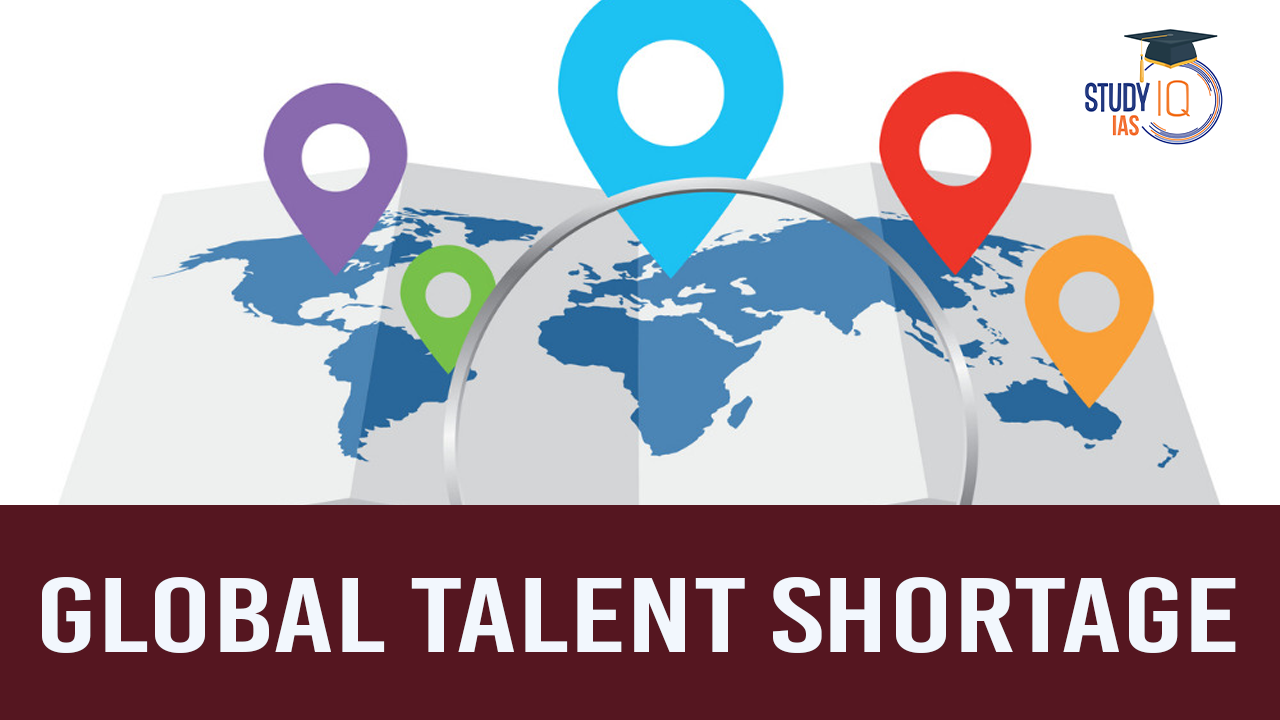Table of Contents
Context: A recent FICCI-KPMG study, ‘Global Mobility of Indian Workforce’, has estimated that by 2030, the demand for skilled workers will exceed supply, leading to a talent shortage of over 85.2 million people.
India’s Advantages and Opportunities
- Favorable Global Perception: Indian workers do not face significant hostility in most international markets.
- Skilled Indian professionals continue to find opportunities despite anti-immigration sentiments.
- Large and Young Workforce: India has a demographic advantage with a large pool of skilled professionals.
- Ability to supply talent to ageing economies in Europe, GCC, and Australia.
- Diverse Skill Base: Strong presence in IT, healthcare, engineering, and emerging sectors like AI and automation.
- Expanding skillsets in renewable energy, sustainability, and digital economy.
- Strategic Geographies for Workforce Mobility: The Gulf Cooperation Council (GCC), Europe (including the United Kingdom) and Australia have a high demand for skilled professionals.
- Healthcare, services, construction, and manufacturing remain high-demand sectors.
- Potential to Boost Economic Growth: Indian workforce participation in global markets can help India reach the $9-trillion GDP target by 2030.
- Tapping into the $8.45 trillion unrealized global economic potential.
- Government’s Focus on Legal Migration: Efforts to curb illegal migration enhance India’s reputation as a reliable talent supplier.
- Ensures better working conditions and legal protections for Indian migrants.
Barriers to the Efficient Movement of Skilled Workers Across Borders
- Regulatory and Immigration Barriers: Complex visa processes and stringent work permit regulations hinder skilled migration.
- Some countries have protectionist policies limiting the entry of foreign workers.
- Recruitment Malpractices and Trafficking: Exploitative recruitment practices and fraudulent agents take advantage of workers.
- Human trafficking remains a serious concern for migrant workers’ safety and rights.
- Policy Barriers and Skill Mismatches: Indian degrees, especially in medicine, are not universally recognized, leading to underemployment.
- Some international job markets require additional certifications or licensing.
- Language and Cultural Barriers: Lack of proficiency in the host country’s language affects job opportunities.
- Cultural differences make integration challenging, reducing workforce efficiency.
Indian Government Initiatives
- Bilateral Agreements and Free Trade Agreements (FTAs): Agreements with GCC nations and other countries to protect Indian workers’ rights.
- The Joint India-UAE Vision emphasizes skill cooperation between the two nations.
- Skill Development Programmes: Training initiatives to align Indian workforce skills with global market needs.
- Focus on sectors like automation, AI, big data, and healthcare.
- Digital Platforms for Workforce Support: Online recruitment systems ensure legal protections for workers.
- Helps prevent fraud, especially in GCC countries.
- Recognition of Qualifications: Ongoing efforts for mutual recognition of Indian academic and professional degrees abroad.
- Regulation of Recruitment Practices: Stricter oversight on recruitment agencies to prevent exploitation and trafficking.
- Promoting Circular Migration and Mobility: Temporary work visas and rotational workforce models to address labour shortages.


 Iran Nuclear Crisis and India’s Role f...
Iran Nuclear Crisis and India’s Role f...
 H1B Visa Program, Beneficiaries, Eligibi...
H1B Visa Program, Beneficiaries, Eligibi...
 Comparison Between India & France's ...
Comparison Between India & France's ...

























